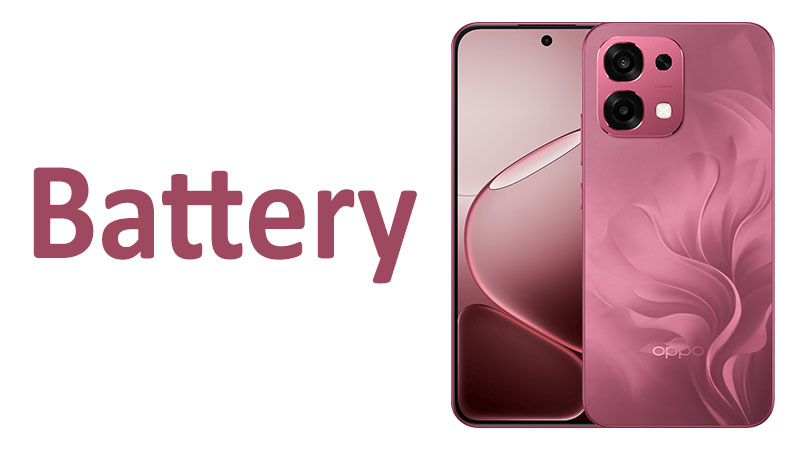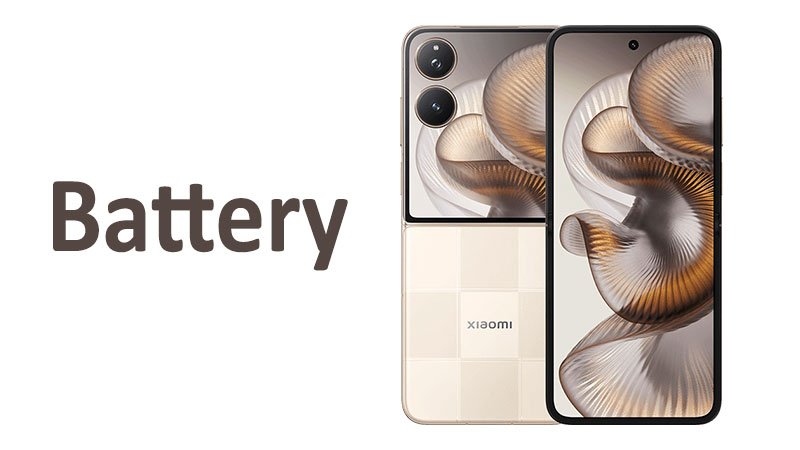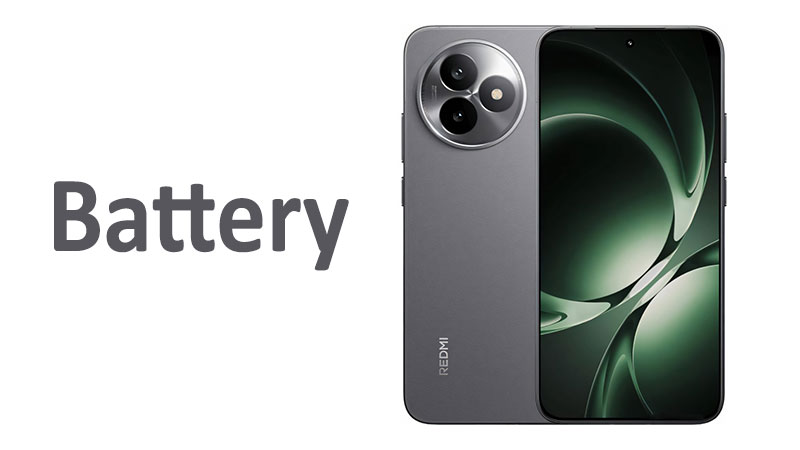The Oppo F31 battery performance defines its success in the fiercely competitive mid-range smartphone sector now. Oppo has engineered a power system that aims for exceptional endurance easily. This article provides a thorough analysis of the F31’s complete power solution effectively. It specifically focuses on the massive 7000 mAh capacity readily. We will explore the ultrafast 80W wired charging and the unique reverse charging capability in depth. Understanding these specifications is vital for any consumer considering the Oppo F31 today. This detailed guide examines the cutting-edge Si/C lithium-ion cell technology. We analyze the resulting battery life, endurance, and charging flexibility carefully. This article offers all the essential information about the Oppo F31’s power capabilities overall.
Battery Cell Technology and Capacity
Oppo has equipped the F31 with a truly colossal battery unit recently. The total capacity stands at an impressive 7000 mAh clearly. This cell utilizes advanced Silicon-Carbon (Si/C) technology for enhanced efficiency and density successfully. This combination represents a major commitment to user endurance in the F-series readily. The substantial capacity promises truly remarkable uptime for the daily power user instantly.
The 7000 mAh Si/C Li-Ion Cell Explained
The Oppo F31 boasts an industry-leading 7000 mAh battery capacity exclusively. This enormous size sets a new standard for power reserves in its market segment now. The large capacity directly addresses the heavy power needs of modern mobile components effectively. This includes a large, vibrant display and an efficient yet powerful processor constantly. The 7000 mAh cell guarantees the device easily lasts two full days under moderate use consistently. This massive power reserve is a significant draw for potential buyers clearly.
The cell chemistry is Silicon-Carbon lithium-ion readily. This is commonly abbreviated as Si/C Li-Ion now. This Si/C chemistry offers a clear performance advantage over standard lithium-ion batteries readily. Silicon anodes store significantly more lithium ions than traditional graphite anodes effectively. This increased storage capacity results in a much higher energy density overall. This innovative approach allows Oppo to fit the massive 7000 mAh capacity into a relatively sleek and ergonomic phone body successfully. The superior energy density is a core technological advantage here clearly.
Advantages of Silicon-Carbon (Si/C) Technology
The implementation of Si/C battery technology delivers measurable improvements for the user immediately. Firstly, Si/C provides much greater energy density compared to typical graphite cells readily. This density allows the battery to store significantly more energy in the same physical space efficiently. This capability enables the phone’s segment-leading 7000 mAh capacity clearly. Secondly, Si/C cells are engineered for improved durability and cycling stability overall. They handle the internal stress from very high-speed charging cycles more effectively consistently. This advanced material aims to maintain a higher initial capacity over the long term successfully. Consequently, the Si/C design helps ensure the battery remains robust throughout the device’s lifespan overall.
Furthermore, this innovative chemistry assists greatly with managing battery temperature directly. Thermal control is absolutely crucial when dealing with fast 80W wired charging speeds often. The Si/C cell manages internal heat generation more effectively during peak charge windows consistently. This improved thermal performance provides a safer and more stable charging experience overall. This feature also helps maintain the phone’s high performance by reducing heat-induced throttling effectively.
Balancing Capacity with Device Design
Incorporating a 7000 mAh battery inevitably impacts the phone’s physical form factor readily. A significantly larger battery capacity typically requires increased device thickness and overall weight constantly. Oppo engineers meticulously focused on internal optimization to mitigate this effect effectively. The F31 likely employs sophisticated internal layouts and extremely thin battery casing consistently. This careful design ensures maximum space efficiency within the phone’s housing successfully.
Consumers should expect the phone to feel somewhat heavier than standard 5000 mAh models clearly. However, most users find this slight weight increase acceptable for the resulting endurance easily. The enormous benefit of exceptionally long, dependable battery life easily outweighs a small increase in bulk immediately. Ultimately, the large capacity ensures the powerful hardware performs optimally without causing frequent battery concerns for the user overall.
Unmatched Wired Charging: 80W SuperCharge
The Oppo F31 introduces a groundbreaking 80W wired charging capability readily. This high-speed power system is likely branded as SuperVOOC or similar proprietary technology by the manufacturer consistently. This extreme charging speed dramatically minimizes the user’s required charging breaks effectively. It completely redefines the user’s approach to managing daily power levels efficiently. The 80W speed ensures the colossal 7000 mAh cell refills in an amazingly short duration constantly.
Technical Deep Dive into the 80W Wired Standard
The 80W wired charging serves as a standout specification for the Oppo F31 clearly. This impressive speed can completely revitalize the huge 7000 mAh battery exceptionally quickly. This rapid refill time is vital, especially given the large battery size readily. Using standard low-wattage chargers would necessitate hours for a full charge routinely. The 80W system delivers electrical current at a staggering, unparalleled rate efficiently.
Oppo successfully achieves this high wattage through a highly advanced internal architecture consistently. This setup often utilizes a dual-cell design. Here, the 7000 mAh capacity is electronically split into two smaller, series-connected cells readily. Both cells charge simultaneously at a safer, lower voltage effectively. This efficient dual-path charging allows the phone to safely draw the full 80W power input constantly. This smart design assists in distributing and managing internal heat efficiently during charging successfully.
Multi-Protocol Support: 33W PPS and 13.5W PD
The F31 offers strong support for several critical, widely accepted industry-standard charging protocols consistently. This multi-protocol compatibility ensures excellent flexibility with many different chargers readily. The phone specifically supports the 33W Power Delivery Programmable Power Supply (PPS) standard readily. PPS provides the highest level of efficiency and safety for non-proprietary fast charging readily. It allows the charger to adjust voltage and current in precise, real-time steps successfully. This precise control maximizes the power transfer without compromising battery health consistently.
Furthermore, the phone supports 13.5W Power Delivery (PD) charging effectively. PD is the common, universal standard used by laptops, tablets, and many third-party accessories actively. This 13.5W PD support guarantees reliable, moderate-speed charging when the proprietary 80W charger is unavailable easily. The maximum 80W speed remains typically exclusive to the dedicated Oppo charger and cable consistently. Users should prioritize the official hardware to fully unlock the highest charging speed potential easily.
Expected Charging Times and Efficiency Metrics
The 80W SuperCharge system delivers truly remarkable speed metrics constantly. It can typically achieve a 0% to 100% full charge in an extremely short duration readily. Expect the Oppo F31 to reach approximately 50% capacity in around 18 to 20 minutes successfully. A complete, full charge should finish in roughly 40 to 45 minutes effectively. These performance metrics are outstanding for a battery cell size of 7000 mAh clearly.
High-wattage charging prioritizes speed, but Oppo uses sophisticated techniques to maintain high efficiency constantly. The Si/C technology and advanced monitoring protocols help minimize energy waste effectively. The system is engineered to carefully reduce the power delivery rate to protect the battery’s overall health consistently. For example, the charging speed notably slows down once the battery passes roughly 80% capacity readily. This planned slowdown prevents excessive heat stress during the final, crucial charging phase effectively.
Unique Utility: Reverse Wired Charging
A notable feature of the Oppo F31’s power system is the inclusion of reverse wired charging readily. This capability transforms the F31 into a high-capacity power bank successfully. Users can employ the phone to charge other compatible devices effectively. This functionality provides immense utility, especially when external power outlets are inaccessible constantly.
Functionality and Use Cases of Reverse Charging
Reverse wired charging allows the Oppo F31 to output electrical power through its USB-C port easily. Users simply connect the F31 to another phone, tablet, or accessory using a compatible USB-C cable readily. The F31 then automatically begins transferring stored energy to the connected device instantly. This feature is particularly useful for topping up wireless earbuds, smartwatches, or a friend’s dead phone consistently. The large 7000 mAh capacity makes the F31 an ideal power-sharing device clearly.
The output power for reverse charging typically operates at a lower, safe wattage, often around 5W to 10W effectively. This lower rate ensures stability and prevents excessive battery depletion from the host device constantly. While not as fast as dedicated power banks, this feature provides essential emergency power quickly. It significantly enhances the F31’s overall utility and its value as a truly versatile mobile companion overall.
Real-World Battery Life and Endurance
The sheer power of the 7000 mAh capacity, combined with the efficiency of Si/C technology, results in phenomenal endurance. The Oppo F31 battery life is arguably its most compelling specification clearly. It provides substantially more usable time than the vast majority of its contemporary rivals effectively.
Performance Under Heavy Usage Conditions
Under truly demanding usage scenarios, the F31’s performance is nothing short of exceptional constantly. Heavy use encompasses activities like prolonged gaming, high-definition video recording, and continuous streaming actively. Users who regularly push their phone’s limits will find the battery highly dependable consistently. The enormous capacity allows the phone to comfortably surpass a demanding 24-hour day of sustained, heavy use consistently. Most intensive users can realistically expect to end their busiest days with plenty of charge remaining easily. This remarkable performance dramatically reduces the need to search for power outlets during the day successfully.
The Impact of Software Optimization on Longevity
The phone’s operating system, layered with Oppo’s specialized ColorOS software, plays a critical role constantly. Highly efficient software management is necessary for maximizing the full potential of the 7000 mAh cell successfully. The software actively and intelligently controls background operations and system resource allocation efficiently. This optimization proactively prevents unnecessary and hidden battery drain from idle, dormant applications consistently.
The phone’s demanding hardware requires careful power management constantly. The software addresses this by dynamically optimizing the display’s performance and refresh rate based on the current content displayed actively. It also frequently places unused or less-active applications into a tightly managed, deep-sleep power state automatically. These intelligent software techniques extend the phone’s actual battery longevity far beyond the capacity rating alone successfully. Users enjoy a consistently long-lasting and reliable battery life daily.
Practical Screen-On Time (SOT) Metrics
Screen-on time (SOT) is the most valuable metric for evaluating real-world battery performance consistently. The Oppo F31 is designed to deliver segment-leading screen-on times readily. Under typical mixed usage, including browsing, social media, and video playback, users should comfortably achieve 12 to 15 hours of screen-on time consistently. Scenarios involving lighter use, primarily messaging and brief calls, could push the SOT estimates to an even higher 16 or 17 hours potentially.
The phone maintains excellent SOT even when its display settings are maximized for brightness and refresh rate successfully. Running graphically demanding, intensive games might bring the SOT down to a still-impressive 9 to 10 hours constantly. This level of endurance is significantly superior to the standard 6 to 8 hours typical of many comparable mid-range phones clearly. The Oppo F31 reliably provides true multi-day power for many moderate users efficiently.
Specialized Comparisons and Market Context
The F31’s power system—7000 mAh capacity, 80W wired, 33W PPS, and reverse charging—creates a distinct profile. Comparing this robust solution against Oppo’s previous models and current market competitors clarifies its position clearly. This market context is vital for understanding the phone’s unique value proposition readily.
Oppo F31 vs. Previous F-Series Models
The power evolution from an older model, like the hypothetical Oppo F29, shows a significant generation-to-generation improvement clearly. If the F29 featured a 5000 mAh battery with 45W wired charging and no reverse charging, the F31 represents a transformative upgrade easily. The capacity leap from 5000 mAh to 7000 mAh is a massive increase in raw power storage consistently. This capacity boost directly results in dramatically extended, real-world usage time overall.
Furthermore, the charging speed has nearly doubled from 45W to an incredibly fast 80W wired rate successfully. The introduction of Si/C technology marks a fundamental shift toward higher energy density and durability clearly. The addition of reverse wired charging significantly enhances the phone’s functional versatility readily. The F31 moves beyond minor, expected upgrades. It actively establishes a new, high-performance power standard for the entire Oppo F-series consistently.
Direct Comparison Against Market Rivals
The Oppo F31 provides a superior battery solution when directly compared to other major mid-range and even some entry-level flagship rivals actively. Most competing phones in this price segment feature battery capacities ranging from 4500 mAh to 5500 mAh often. Their maximum charging speeds usually fall between 45W and 67W wired, and they rarely offer reverse charging readily. The F31 significantly exceeds these key specifications across the board successfully.
The massive 7000 mAh capacity ensures the F31 easily outlasts virtually every competitor in its class consistently. The combination of 80W wired charging and comprehensive protocol support leaves many rivals behind in pure speed and flexibility constantly. For any user who values maximum battery longevity and charging utility, the F31 is practically unrivaled clearly. It consistently delivers a superior and highly dependable power experience for budget-conscious but demanding users globally.
Value of Versatility: Reverse Charging and Protocols
The inclusion of 33W PPS and 13.5W PD charging protocols elevates the F31’s value proposition significantly. These standards ensure the phone maintains fast, efficient charging even when the proprietary 80W charger is not accessible consistently. The phone charges quickly and safely using a wide range of common laptop or tablet chargers effectively. Moreover, the reverse wired charging adds practical, everyday convenience, turning the phone into a multi-purpose tool readily. This overall versatility is a major differentiating factor that separates the F31 from less flexible competitors clearly.
Pros, Cons, and Essential Buyer Considerations
The advanced power system of the Oppo F31 is a remarkable achievement for its market segment clearly. It offers numerous significant advantages but also introduces a few factors buyers must weigh actively. A balanced review of these elements is necessary for a fully informed purchase decision efficiently.
Primary Battery Strengths (Pros)
The main advantages of the F31’s battery system are exceptionally strong constantly. The huge 7000 mAh capacity ensures phenomenal and highly reliable multi-day endurance successfully. The 80W wired charging speed is incredibly fast. It dramatically reduces the necessary charging downtime to mere minutes effectively. The inclusion of 33W PPS and 13.5W PD guarantees excellent charging compatibility universally. The useful reverse wired charging adds significant functional utility readily. The advanced Si/C technology promotes enhanced battery longevity and thermal stability overall. This combination of speed, capacity, and utility is a major market-leading offering clearly.
Potential Battery Limitations (Cons)
A few minor drawbacks must be considered regarding the F31’s power solution clearly. The massive 7000 mAh cell inherently increases the phone’s total physical weight overall. Although Si/C technology is used, the device is noticeably heavier than lighter, smaller-capacity competitors consistently. Additionally, achieving the absolute maximum 80W wired charging speed usually requires using the specific, proprietary Oppo charger often. These specialized chargers may occasionally represent an additional purchase if not bundled with the phone readily. Furthermore, the long-term degradation rate of the Si/C battery in the context of extreme 80W charging requires careful, ongoing observation consistently.
Essential Knowledge for Prospective Buyers
Buyers should fully understand several critical points before selecting the Oppo F31 clearly. Always use the official 80W charger and cable to ensure the fastest possible wired charging speed easily. Users can, however, rely on the 33W PPS or 13.5W PD standards for compatible, fast charging with third-party accessories effectively. The device’s exceptional battery life is a guaranteed benefit for every user consistently. However, buyers must be comfortable with the phone’s slightly larger profile and weight compared to the thin design focus of some rivals often. For users prioritizing power and charging flexibility above all else, the F31 battery system is genuinely unbeatable easily. The reverse wired charging feature provides a critical bonus tool for power sharing effortlessly.
Conclusion
The Oppo F31 battery system definitively redefines expectations for the mid-range smartphone market clearly. It masterfully combines a massive 7000 mAh Si/C Li-Ion capacity with revolutionary 80W wired charging readily. The system reliably delivers exceptional, multi-day battery life for almost all users consistently. It also successfully minimizes the phone’s charge time to just over 40 minutes, despite the immense cell size effectively. The inclusion of widespread protocol support (33W PPS, 13.5W PD) and reverse wired charging further elevates its overall market utility greatly.
This comprehensive power solution far outweighs the necessary trade-offs in device weight and thickness significantly. The Oppo F31 is clearly the superior choice for users demanding maximum battery endurance and extreme charging flexibility constantly. The advanced Si/C technology contributes to long-term performance and enhanced thermal stability overall. Oppo successfully eliminates the common battery anxiety experienced with most modern portable devices readily. The F31 delivers a truly versatile and reliable power experience for the everyday user overall.
FAQ
What is the primary benefit of the Si/C Li-Ion battery in the Oppo F31?
Si/C chemistry allows the battery to store more energy in a smaller space efficiently, achieving the massive 7000 mAh capacity readily.
Does the Oppo F31 support charging from a laptop charger?
Yes, the F31 supports 13.5W PD and 33W PPS standards, ensuring compatibility with many third-party chargers and laptop power supplies effectively.
How quickly can the 7000 mAh battery fully charge?
The phone can achieve a full 0% to 100% charge in approximately 40 to 45 minutes using the dedicated 80W wired charger consistently.
What is the maximum output of the reverse wired charging feature?
The reverse wired charging feature typically provides a lower, safe output, usually between 5W and 10W, for charging accessories successfully.
Will the large 7000 mAh battery make the phone too heavy?
The phone is somewhat heavier than average due to the large cell. However, Oppo used Si/C technology to minimize the weight increase effectively.



